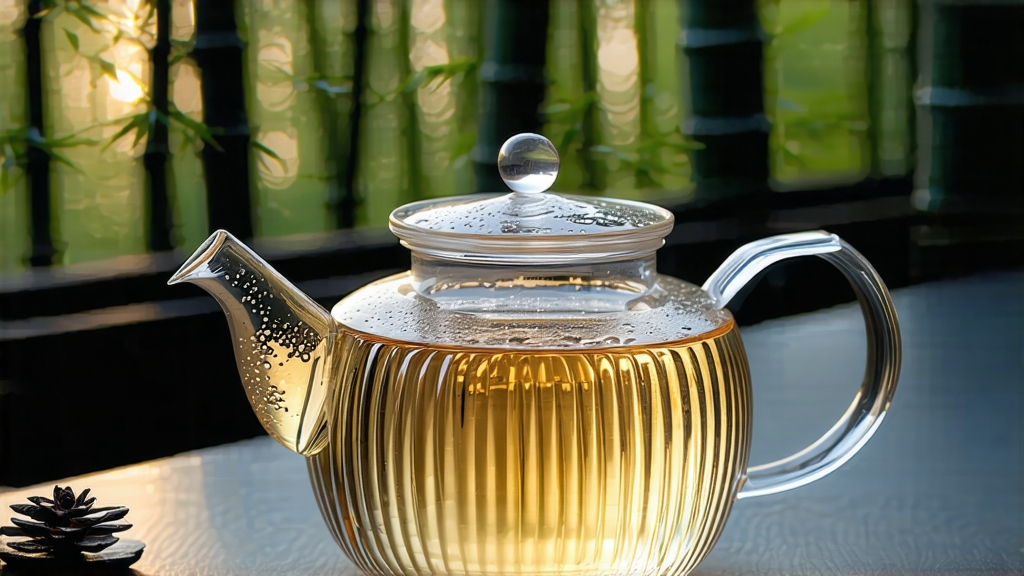
White tea is the quietest child in the Chinese tea family, and among its siblings White Hair Silver Needle (Bai Hao Yin Zhen) is the most ethereal. International drinkers often meet white tea through bagged “bai mu dan” blends, yet the needle-shaped original remains a hidden gem. This article invites you to travel from Tang-dynasty court records to a 2023 spring pre-dawn garden in Fuding, feel the chill of a wicker tray in a ventilated loft, watch silver hairs catch the lamplight, and finally taste what Chinese poets once called “moonlight dripping into porcelain.”
-
Historical whispers
The first written trace appears in Emperor Huizong’s 1107 Treatise on Tea, where “white buds of superior grade” were tribute. At that time the leaves were steamed like Japanese tencha, not withered; the modern craft was fixed during the late Ming dynasty when tea makers in northern Fujian abandoned wok-firing and simply let buds dry in mountain air. By the 18th century Fuding big-white tea trees (Da Bai Hao) had been selected for their oversized downy buds, and Silver Needle became a separate commercial grade. When British merchants carried it to London in the 1890s it fetched higher prices than Keemun, yet two wars and the rise of black CTC teas pushed it into regional obscurity until the 1990s white-tea renaissance. -
Terroir and micro-seasons
Authentic Silver Needle comes only from three Fujian counties—Fuding, Zhenghe, and Jianyang—where red-yellow granitic soils meet subtropical maritime clouds. The picking window is brutal: only three to five days in late March when the bud reaches 2.5–3 cm but has not yet unfurled. Farmers wake at 3 a.m. to finish picking before 10 a.m., while dew still protects the hairs from breakage. A single kilo needs roughly 18,000 buds, all plucked with the nail, not the fingertip, to prevent bruising. -
Withering: the art of doing nothing
Unlike green tea that is “killed-green” at 280 °C, Silver Needle is only withered and dried. The buds are spread one layer thick on bamboo trays stacked like shelves in a loft where windows face southeast and northwest. For 36–48 hours they rest while moisture drops from 75 % to 10 %. The key is to ride the mountain breeze; electric fans are taboo. Master crafters judge readiness by the sound—when a bud snapped between nails produces a crisp “pa” without bending, withering is complete. A final gentle bake at 40 °C locks in the aroma, yet total heat exposure is less than ten minutes, preserving the enzyme profile that fuels graceful aging. -
The chemistry of velvet
Electron-microscope images show each bud cloaked in 200–300 trichomes per mm². These hairs are rich in bound terpenes that hydrolyze during storage, releasing floral lactones. Young buds also contain high levels of theanine (2.5–3 %) and low catechin oxidation, yielding a liquor that is sweet first, astringent last—opposite to green tea. Because no rolling ruptures cells, oxidation proceeds slowly via residual enzymes; year by year the leaf turns from jade-green to ochre, and flavor migrates from melon to honey to dried longan. -
Grades and market reality
Chinese national standard GB/T 22291 divides Silver Needle into two grades: Special and First. Special grade must be 100 % bud, uniform 30 mm length, and carry >10 % surface down by weight. First grade allows 5 % open leaf. Be wary of “Yunnan Silver Needle” made from large-leaf assamica; its buds are thicker, taste malty, and lack Fujian’s lilac note. Aged versions (three, seven, even twenty years) are pressed into 100 g cakes and command auction prices above USD 1,000 per cake, driven by Hong Kong collectors who value the cooling property Traditional Chinese Medicine assigns to old white tea. -
Brewing: less is luminous
Western recipes often over-dose. For gongfu style, use 3 g of buds in a 120 ml gaiwan, 85 °C water, 5-second rinse to wake the hairs, then